THE MOTOR EFFECT AND FLEMING'S LEFT HAND RULE
Our snappiest title yet? Or is it a physics nightmare that has plagued students for over a century. Welcome to the world of the motor effect and Fleming's left hand rule! I know what you are thinking, seriously, like ....really... who cares? You should! Without this we wouldn't have electric motors. No washing machines, no electric cars, no electric trains, no fans, air conditioning, spin dryers, electric cranes or record players. Bad hair days would be common as we would have no hair dryers either! The electric motor is a thing of genius. Not only that, but all loudspeakers work using the motor effect. We would have no artificial music without them, no rock music, no discotheques, smart speakers, no earphones nor ear pods! The motor effect - one of the greatest discoveries in physics. Learn more by watching the video to learn about Fleming's left hand rule, the motor effect and meet one of our favourite Physics equations called BIL! There's more in our revision notes. Full of knowledge and confidence on this topic already? Why not head straight to our challenging quiz!?

The Motor Effect Explained
The motor effect? What is it? How does it work? Read on...
Current-Carrying Wire: Imagine a straight wire through which an electric current flows. This wire generates its own magnetic field around it due to the moving charges (electrons) within it.
External Magnetic Field: Now, let’s introduce an external magnetic field. Suppose there’s a magnet nearby or another wire carrying current, creating a magnetic field in the vicinity.
Force on the Wire: When the current-carrying wire is placed within this external magnetic field, the two magnetic fields interact. According to the motor effect, a force acts on the wire. This force is perpendicular to both the direction of the current and the direction of the magnetic field.
Fleming’s Left-Hand Rule: To determine the direction of this force, we use Fleming’s left-hand rule: (SEE THE DIAGRAM)
Point your left thumb in the direction of the current (conventional current flow, from positive to negative).
Extend your left index finger in the direction of the magnetic field.
Your left middle finger will then point in the direction of the force acting on the wire.
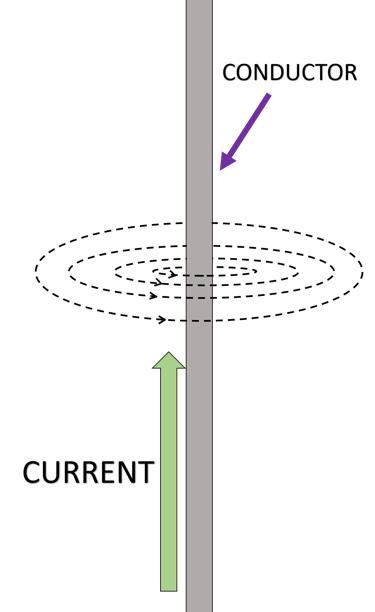


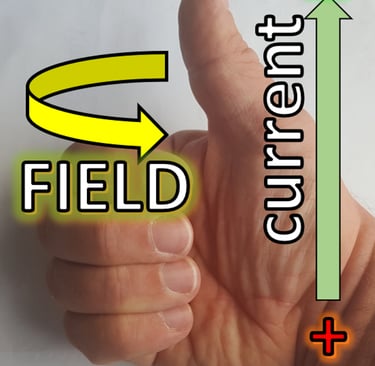
Applications:
Electric Motors: The motor effect is the fundamental principle behind electric motors. In an electric motor, a coil (or multiple coils) carrying current experiences a force due to an external magnetic field. This force causes the coil to rotate, resulting in mechanical motion.
Galvanometers: Devices like galvanometers (used in measuring small currents) also rely on the motor effect.
Electromagnetic Relays: These switches use the motor effect to control larger currents by using a small current to move a switch.

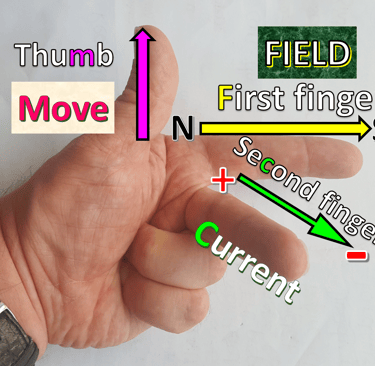
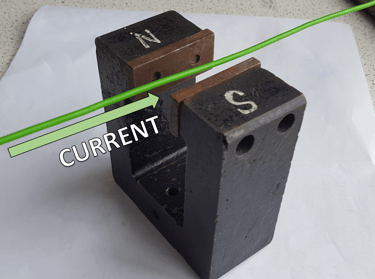

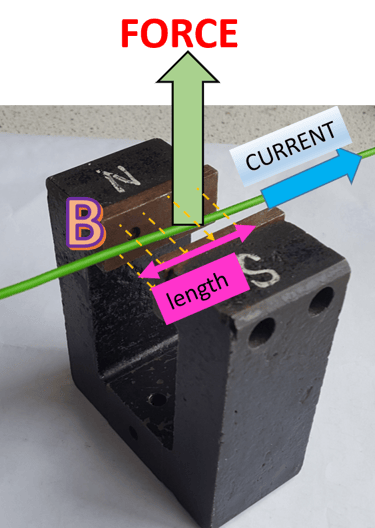



Here's "BIl"!
Time to meet a very useful equation. Just how big is that force acting on the wire once its in an magnetic field. Luckily the elegance of physics provides a very simple way of working it out!
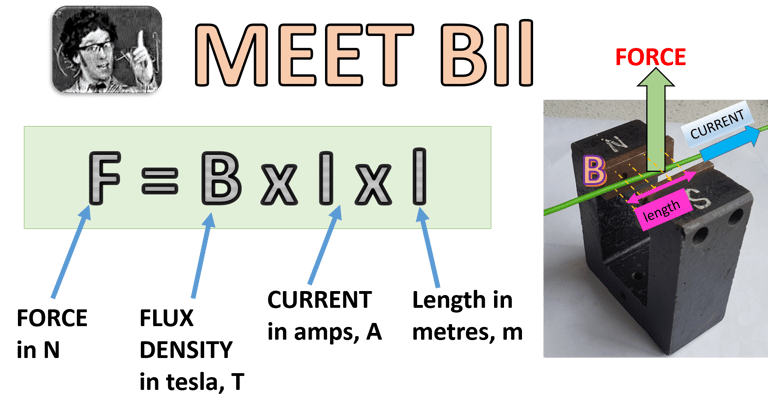

THE MOTOR EFFECT QUIZ!
A very challenging quiz on the motor effect and fleming's left hand rule! Can you meet the challenge? Is your left hand flexible enough to solve the devilish conundrums? Find out here!




